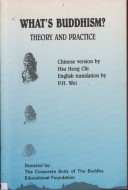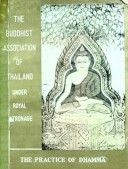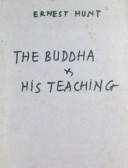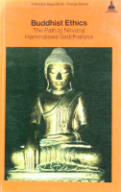Tìm Sách
Sách tiếng Anh-English >> What’s Buddhism? Theory and practice
Thông tin tra cứu
- Tên sách : What’s Buddhism? Theory and practice
- Tác giả : Hsu Heng Chi
- Dịch giả : P. H. Wei
- Ngôn ngữ : Anh
- Số trang : 177
- Nhà xuất bản : The Corporate Body of the Buddha Education Foundation
- Năm xuất bản : 1989
- Phân loại : Sách tiếng Anh-English
- MCB : 12010000005493
- OPAC :
- Tóm tắt :
WHAT’S BUDDHISM? THEORY AND PRACTICE
Chinese version by Hsu Heng Chi
English translation by
P. H. Wei
Donated by: The Corporate Body of the Buddha
Education Foundation
5493/1989/77p
CONTENTS
PART ONE – THEORY
Preface
Foreword
Chapter 1. What is the cosmic life?
a. Phenomena of the universe
b. The stream of life
c. Who am I?
d. Delusion, Karma and suffering
Chapter 2. Fundamental Turning-point – Undertanding the nature of mind
a. What is self-nature?
b. Mind
c. The interrelationship of mind, things and nature
Chapter 3. The problem of practising Buddhism
a. The objective of Buddhism
b. Some fundamental prerequisites
c. General rules of mind-cultivation
d. Look into the mind-a fundamental simple method of cultivation
e. People and affairs are opportunities for mind-cultivation
f. The Name-reciting Method-another miraculous efficacious method
Chapter 4. Some erroneous criticism of Buddhism refuted
a. Buddhism is NOT a treatise on “Mind-only”
b. Buddhism goes MORE THAN moral preaching
c. Buddhism is NOT negative and pessimistic Escapism
d. Buddhism is NOT established on the basis of Theology
Conclusion
PART TWO: HOW TO PRACTISE BUDDHISM
Chapter 5. Frustrated and Despairing Buddhists
Chapter 6. The Importance of Cultivation
Chapter 7. The Aim of cultivation
Chapter 8. The significance of Cultivation
Chapter 9. Methods of Cultivation
a. General Cultivation
b. Some Fundamental Methods
1. Ch’an Practice
2. looking into the Mind
3. Tantric Practice
4. Name-reciting
c. The Common Characteristic of Integration of all Methods of Cultivation
Chapter 10. In the Course of Cultivation
a. In the Course of Eliminating ‘Habits’
b. Stages of Progressive Development and Order of Positions
c. When may Supreme Enlightenment be Attainable?
Epilogue
Notes & Glossary
PREFACE
What is Buddhism? What has Buddhism to do with all of us in eveyday life? How should we learn and practise Buddhism to attain Enlightenment? In answering these vital questions, this book shows us where lies the great significance of Buddhism.
The correct way to understand Buddhism, as this book points out at the outset, is to look into every aspect of Buddhism objectively, unbiasedly and thoroughly. Buddhism is everyone’s Dharma. For us, Buddhism lies nowhere but rightfully in the phenomena of the world.
Imparting general knowledge of Buddhism, this book present a cursory review of the essential aspects of Buddhism in a broad outline. In Part One some fundamental questions such as the interrelationship of matter, mind and nature, the phenomena of the universe and human life, the law of Causality, the question of suffering, and others are treated in condensed statements extracted from some popular Mahayana sutras and sastras. What is said in Part Two of the numerous and diversified Buddhist practises on mind-cultivation comes from no other source than those Patriarchs’ and those Enlightened Master’s own experiences of self-realization.
 Facebook
Facebook
 Google
Google
 Google+
Google+


















